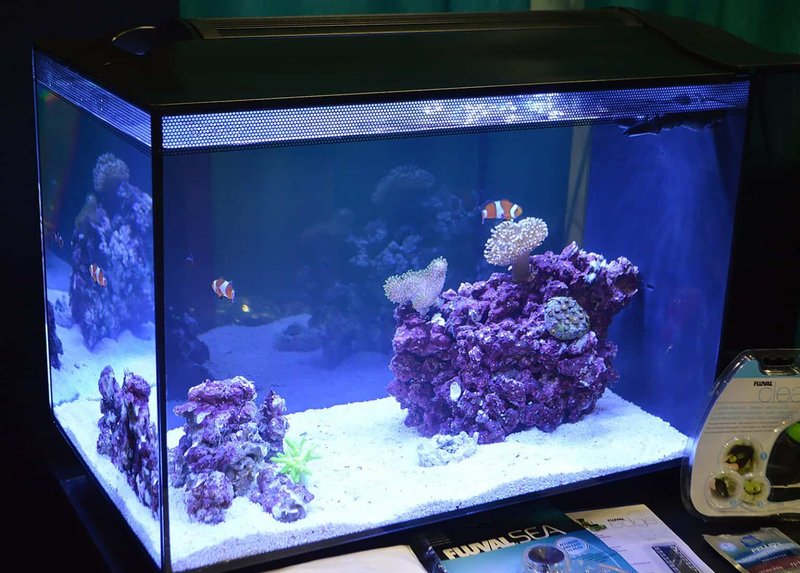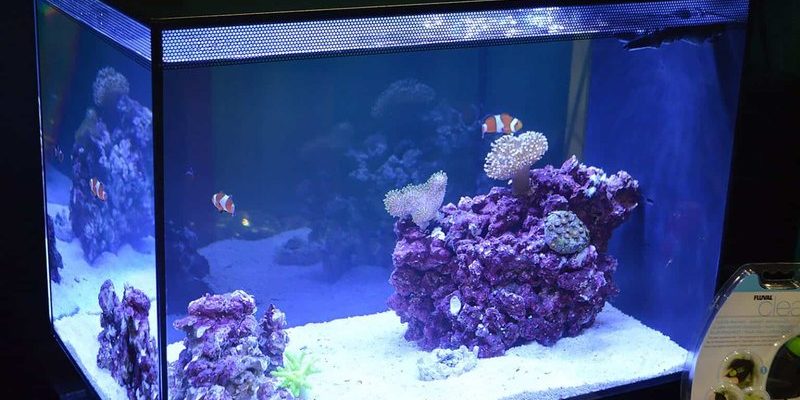
When you consider their needs, it’s like putting together a puzzle; each piece—the right tank size, salinity levels, and temperature—fits together to create a harmonious environment. There are various wrasse species, like the popular six-line wrasse or the vibrant fairy wrasse, and they all have specific requirements. Let’s dive into what you need to know to create the ideal habitat for your wrasse.
Understanding Tank Size for Wrasse
When it comes to choosing the right tank size for your wrasse, think about their natural habitat. In the wild, these fish are often found in coral reefs where they swim freely with plenty of space. Ideally, a tank for wrasse should be spacious enough for them to swim around comfortably. A minimum tank size of 30 gallons is generally recommended for smaller species like the six-line wrasse. For larger wrasse or if you plan to keep a few together, consider a 50-gallon or larger tank.
Each wrasse has its own personality, and they tend to be active swimmers. If they feel cramped, it might lead to stress or aggressive behavior. Just like how we feel cooped up in a small room for too long, fish need their space too! A larger tank also provides a better environment for filtration and keeps water quality stable, which is crucial for the health of your fish.
If you’re considering a reef tank, it’s good to remember that wrasse often enjoy swimming in and out of rocks and corals. This means adding plenty of live rock or structured decor can help mimic their natural environment and provide hiding spots, which they appreciate. It’s like creating a little underwater playground!
Salinity Requirements for Wrasse
Salinity is another critical piece of the puzzle when it comes to keeping wrasse. These fish thrive in saltwater environments, so it’s essential to maintain the right salinity levels in your tank. Generally, a salinity range of 1.020 to 1.025 specific gravity is ideal for wrasse. This level mimics the ocean’s natural conditions, giving them a sense of home.
To measure salinity accurately, a refractometer is your best friend. This handy tool provides a precise reading, letting you adjust the salt concentration as needed. If you notice your wrasse acting lethargic or hiding more than usual, check the salinity; fluctuations can stress them out. Just like us, fish can become unwell if their living conditions aren’t right.
When setting up your tank, it’s a good idea to gradually acclimate your wrasse to the salinity level. Introducing them too quickly to changes can be shocking, much like jumping into a cold pool unexpectedly! Adjust the salinity over a few days if you’re transitioning from freshwater or a different environment.
Temperature Considerations for Wrasse
Temperature is another vital factor. Most wrasse prefer a water temperature between 74°F and 78°F (23°C to 26°C). Keeping the water at this comfortable range helps maintain their health and encourages them to be active. Sudden changes in temperature can stress out your fish, so it’s important to monitor it regularly.
Using a reliable aquarium heater is essential, especially if you live in a place where temperatures fluctuate. You want to avoid those cold snaps in your tank—think of it as making sure your home stays cozy in the winter. Many heaters come with built-in thermostats, making it easier to maintain a consistent temperature.
If you notice the temperature rising above 78°F, it’s important to take action quickly. Wrasse can become stressed or more susceptible to disease in warmer temperatures. Using a fan or opening the tank lid can help cool it down, but be sure to check that the salinity and pH remain stable during any adjustments.
Filtration Needs for a Healthy Environment
Setting up an effective filtration system is crucial for keeping your wrasse happy and healthy. A good filter will help remove waste, excess food, and harmful toxins from the water. Wrasse are often messy eaters, and maintaining clear water is key to preventing health issues.
When choosing a filter, look for one that can handle at least twice the volume of your tank. For example, if you have a 50-gallon tank, opt for a filter rated for 100 gallons or more. This ensures the water stays clean without overworking the filter. You might even consider a canister filter for larger setups, as they provide excellent mechanical and biological filtration.
Additionally, incorporating live rock is beneficial. It acts like a natural filter, helping maintain water quality and creating a more stable environment for your wrasse. Just like having a good air purifier at home, good filtration is essential for keeping your aquatic friends thriving.
Creating a Natural Habitat
Your wrasse will appreciate a well-decorated tank that resembles their natural habitat. Consider adding live rock, sand, and plenty of hiding spots. Wrasse love to explore and dart in and out of crevices, so creating little nooks and crannies will keep them entertained.
Using fine-grain substrate is also important. It’s not just pretty; it allows wrasse to forage and dig, which is a natural behavior for many of these fish. Think of it as giving them a mini beach where they can feel at home!
Live plants can also provide an excellent addition to your tank. While wrasse don’t typically nibble on plants, they do appreciate the added cover. Just be cautious with the types of plants you choose since some can alter water chemistry.
Ultimately, a well-structured tank will not only keep your wrasse happy but will also enhance the overall aesthetic of your aquarium.
Common Challenges and Tips for Success
Keeping wrasse can come with its own set of challenges. One common issue is aggression, especially if you keep multiple wrasse in the same tank. They can be territorial, so it’s important to research the species beforehand and introduce them slowly if you plan on having more than one.
Another challenge can be maintaining water quality. Regularly check and change the water, aiming for 10-15% changes weekly. This practice will help keep conditions stable and your wrasse healthy. Make sure to have a reliable test kit on hand to monitor levels of ammonia, nitrite, nitrate, and pH, which are key indicators of water quality.
Lastly, always observe your fish closely. Any changes in behavior can be a sign that something isn’t quite right. If they’re hiding more than usual or showing signs of distress, it’s time to investigate. Remember, a happy wrasse is an active wrasse!
In summary, setting up a tank for your wrasse requires attention to detail, but with the right size, salinity, temperature, and environment, you’ll create a thriving home for your fishy friends. Enjoy the process, and you’ll be rewarded with the vibrant colors and lively antics of your lovely wrasse for years to come.

